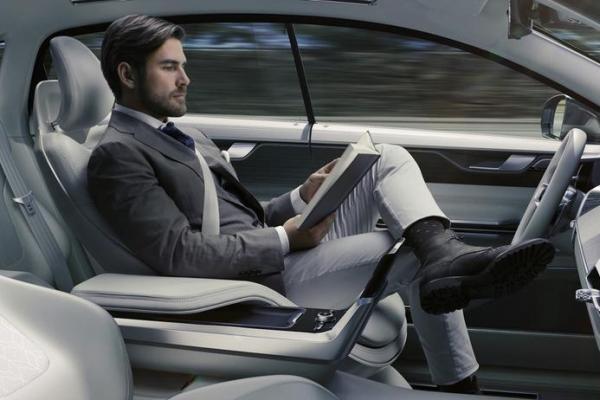Published on the 18/05/2017 | Written by Donovan Jackson

Self-driving cars creep closer as Vehicle-to-Vehicle technology introduced…
Research organisation Juniper has said that by 2022, half of all new vehicles will be equipped with Vehicle-to-Vehicle (V2V) hardware, technology which as the name implies enables real-time short-range communication between vehicles.
Such technology is the basis for overcoming one of the biggest factors in motor vehicle accidents: operator error. Indeed, Stanford University’s Center for Internet and Society estimates that some 90 percent of prangs come down to people doing things behind the wheel that they really shouldn’t.
Juniper’s research, Consumer Connected Cars: Applications, Telematics & V2V 2017-2022, found that the total number of V2V-enabled consumer vehicles on the road will reach 35 million by 2022, up from less than 150,000 vehicles in 2017. That’s a compound annual growth rate of 376 percent, which Juniper said reflects the early stages of roll-out for V2V.
There are a lot of cars out there, of course, with nearly 5 million vehicles on New Zealand roads (and farms, etc) and about 18 million in Australia. Globally, a 2014 report estimated that there are 1.3 billion cars (and anticipates 2 billion by 2035). By 2022, that 35 million, by Juniper’s numbers, will still only represent 2.7 percent of all vehicles.
V2V, noted Juniper, was launched by Mercedes-Benz and Cadillac and the researcher believes it will play an important role in the advance of autonomous vehicles as the annual production of self-driving cars approaches 15 million by 2025. The research found that, alongside GPS, LiDAR (Light-Detection and Ranging) and road mapping, V2V will be amongst the essential technologies in delivering autonomous driving systems.
For V2V to be successful, the research found that OEMs must include cellular connectivity to provide OTA (Over-The-Air) firmware updates. It recommended that OEMs implement 5G technology at the earliest opportunity to benefit from these newly enabled services.
But wait, there’s more. Juniper also said 5G will play a pivotal role in the future of the V2X (Vehicle-to-Everything) communications. Low latency, high bandwidth and wide coverage, it said, will be the key enabler of new services such as in-vehicle audio streaming and V2I (Vehicle-to-Infrastructure) services, such as safety and weather warnings for drivers.
As the complexity of these services increases, Juniper estimates that future automotive technologies, including autonomous systems, could each consume up to 1 terabyte of data per day.
Research author Sam Barker added: “For V2X to meet future expectations, development must continue on the premise that 5G will be the underlying connection. This will be underpinned by increasing cross-industry collaborations such as the 5G Automotive Association.”
For drivers down under, however, the true advent of clever cars which don’t drive into each other, and quite possibly which drive themselves (like those seen in the 2002 Tom Cruise movie Minority Report) isn’t likely to happen any time soon. After all, the average age of a car in New Zealand is a hoary 14 years. In Australia, ten.
Download Juniper’s whitepaper, ‘What Vehicle-to-Vehicle will Actually Mean for OEMs’.



























